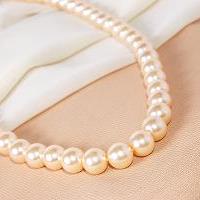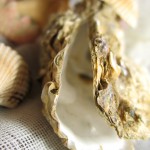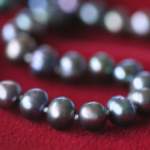Cultured Pearls – Birth of the Industry
 Pearls have long been a favorite as an embellishment for jewelry and nowadays almost all pearls coming into the market are cultured pearls. Cultured pearls are formed by intentionally inserting a foreign object into a mollusk, typically an oyster, and waiting for the natural process of nacre to build up.
Pearls have long been a favorite as an embellishment for jewelry and nowadays almost all pearls coming into the market are cultured pearls. Cultured pearls are formed by intentionally inserting a foreign object into a mollusk, typically an oyster, and waiting for the natural process of nacre to build up.
The process of creating cultured pearls was developed in the early 1900s by three Japanese researchers, one of whom was Kokichi Mikimoto. He found that inserting bead tissue into an Akoya oyster produced a perfectly round pearl. He patented the technique in 1916 and the cultured pearl industry was born. His process allowed cultivation or farming of high quality, round pearls in large numbers, making them affordable to everyone.
It takes 2 - 5 years for cultured pearls to grow in modern "pearl farms". Oysters are bred on the farms and when they are about 2 years old they are surgically implanted with a bead made of mother-of-pearl. X rays are used to track the development of the pearl until it is harvested. After the pearls are extracted they are washed and polished, and then sold to jewelers around the world.
Mikimoto's discovery is responsible for the rapid growth of the pearl industry. The process standardized pearl development, and allowed for reliably consistent pearl creation. Today the cultured pearl industry has replaced natural pearls in the development of natural, South Sea, and Tahitian varieties.

More from my site
Category: Facts & Useful Info









